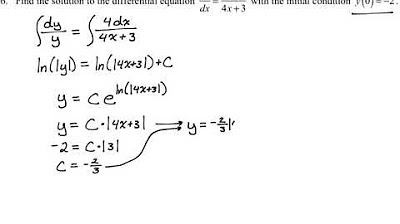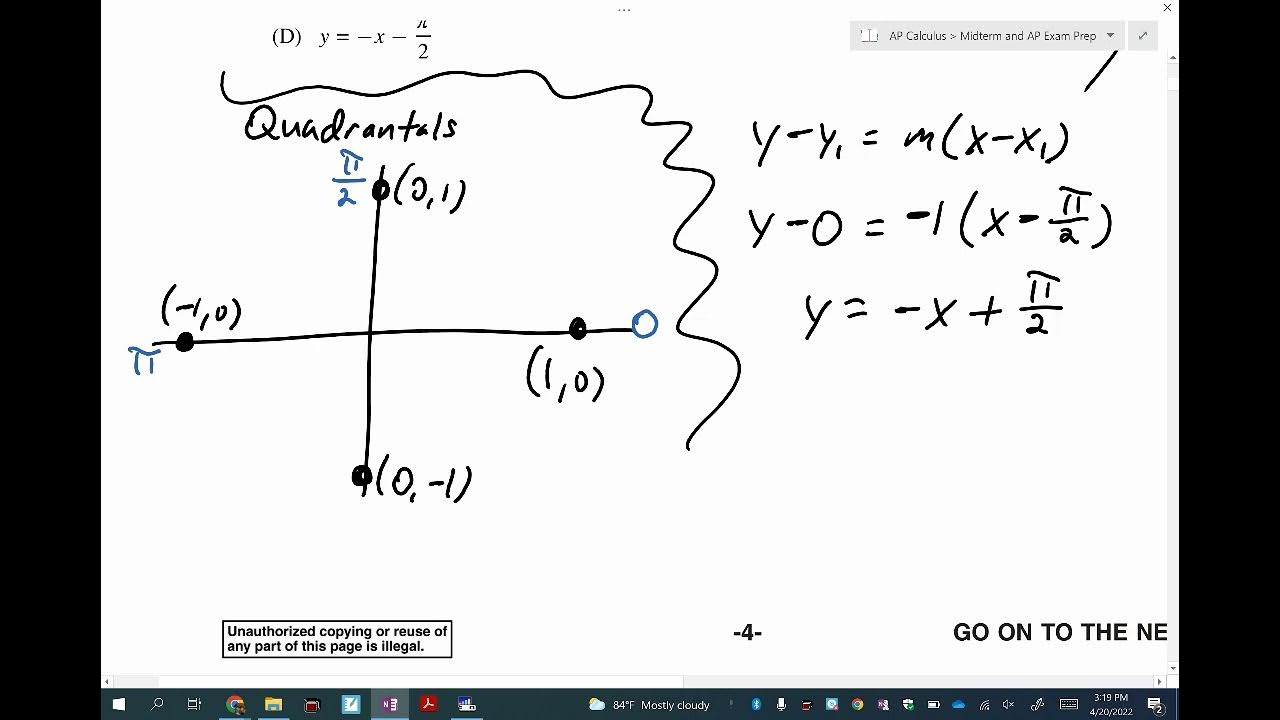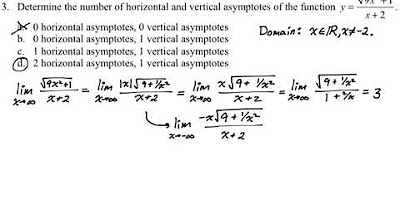Ch 3 | Basic Maths ( Part 1 ) | Mathematical Tool | Differentiation & Integration | JEE | NEET | 11
TLDRThe video script by Rohit Gupta is an educational session aimed at demystifying the concepts of differentiation and integration for students. It promises to eliminate the fear associated with these mathematical topics by teaching the basics in a straightforward manner. The instructor uses relatable examples and emphasizes the importance of understanding the underlying principles rather than memorizing formulas. The session is designed to be interactive, encouraging students to participate and ask questions, fostering a deeper understanding of calculus.
Takeaways
- 📚 The script is an educational lecture, primarily focusing on the concepts of differentiation and integration in mathematics.
- 👨🏫 The lecturer, Rohit Gupta, aims to alleviate students' fear of calculus by teaching them the basics of differentiation and integration.
- 🔢 The lecture includes examples and exercises to illustrate the process of differentiating and integrating mathematical functions, emphasizing the importance of understanding the underlying concepts.
- 📈 Differentiation is introduced as the process of finding the rate of change of a function, symbolized by 'dy/dx', and is explained through various function types like polynomials and trigonometric functions.
- ∫ Integration is presented as the reverse process of differentiation, with the symbol '∫', and is discussed in the context of finding areas under curves.
- 📚 The importance of practicing and understanding mathematical operations rather than just memorizing formulas is highlighted.
- 📉 The script discusses the concept of 'definite integration' where limits are set to define the interval over which the integration is performed.
- 📌 The lecturer emphasizes the need to understand the relationship between the independent and dependent variables in a function for both differentiation and integration.
- 🔁 The script touches on the idea that differentiation and integration are inverse processes, with one being the reverse of the other.
- 💡 The importance of applying learned concepts to various types of mathematical functions, such as exponential, logarithmic, and trigonometric functions, is stressed.
- 📝 The lecture encourages students to practice problemsolving by working through examples and exercises, reinforcing the idea that mathematics is about doing, not just watching.
Q & A
What topics will be covered in this basic math series?
-The series will cover differentiation and integration.
How will this series help students with differentiation and integration?
-The series aims to eliminate the fear of differentiation and integration by providing clear explanations and examples.
Why is understanding differentiation and integration important in mathematics and science?
-Differentiation and integration are essential in both mathematics and science, especially in physics, as they help in understanding various concepts and solving problems.
What analogy is used to explain the concept of division in the script?
-Division is explained using the example of dividing 207 by 3 to get 69, emphasizing understanding the meaning of division rather than just performing the calculation.
What is the symbol for differentiation and how is it introduced?
-The symbol for differentiation is introduced as \( \frac{dy}{dx} \), and it represents the rate of change of one variable with respect to another.
What is the difference between independent and dependent variables in a function?
-An independent variable is the one that is manipulated or changed, while a dependent variable depends on the independent variable.
What are the different types of functions mentioned in the script?
-The script mentions constant functions, polynomial functions, trigonometric functions, and logarithmic functions.
How is a constant function described and differentiated?
-A constant function remains the same and its differentiation is zero.
What are the key steps to perform differentiation as per the script?
-Key steps include understanding the function, applying differentiation rules, and using examples to practice.
What is the relationship between differentiation and integration?
-Differentiation and integration are inverse processes; integration undoes differentiation and vice versa.
Outlines
📚 Introduction to Basic Mathematics
Rohit Gupta introduces a basic math series focusing on differentiation and integration. He aims to eliminate students' fear of these mathematical concepts, which are integral to the field of science, particularly physics. The first part will teach how to differentiate and integrate, while the second part will explain the meaning behind these operations.
🔍 Understanding Division and Its Meaning
The script delves into the concept of division, explaining its practical application and the difference between performing the operation and understanding its meaning. It uses an example of dividing a number by 3 to illustrate the process and emphasizes the importance of knowing the 'why' behind mathematical operations.
📈 Differentiation: A Simple Process
The explanation of differentiation is simplified, describing it as a process to find the rate of change between variables. The paragraph introduces the concept of dependent and independent variables and how they relate to each other in a function, which is key to understanding differentiation.
📘 Types of Functions and Their Properties
This section discusses various types of functions, such as constant, polynomial, trigonometric, logarithmic, and exponential functions. It highlights the importance of understanding the properties of these functions when performing differentiation.
🎓 The Importance of Practice in Learning
The speaker emphasizes that learning mathematics, particularly differentiation and integration, is not about memorization but about understanding and practice. It encourages students to engage with the material actively rather than passively observing.
📌 Coding and Its Relevance
The script touches on coding, suggesting that understanding the coding behind certain operations can be beneficial. It hints at a future discussion on how coding is used in the context of the material covered.
📉 Dealing with Complex Problems in Mathematics
The paragraph discusses strategies for dealing with complex mathematical problems, such as breaking them down into simpler parts and using properties of functions to simplify the process.
📚 Recap and Encouragement for Active Learning
The script concludes with a recap of the importance of understanding the concepts of differentiation and integration rather than just memorizing formulas. It encourages active learning and practice to truly master these mathematical skills.
📈 Introduction to Integration
The speaker begins to introduce the concept of integration as the reverse process of differentiation. It sets the stage for a deeper exploration of integration and its applications in the subsequent parts of the series.
🔢 The Concept of Limits in Integration
This section explains the importance of limits in the process of integration. It discusses how integration involves finding the sum of an infinite number of infinitesimally small parts, which is a fundamental concept in calculus.
📘 Types of Integration
The script differentiates between two types of integration: with limits and without limits. It explains the process of integration with limits and how it is used to solve problems in physics and other fields.
🎓 Conclusion and Final Thoughts
The speaker concludes the session with a summary of the key points discussed and encourages students to subscribe for more content. It emphasizes the importance of understanding the underlying concepts of mathematical operations rather than just the operations themselves.
Mindmap
Keywords
💡Differentiation
💡Integration
💡Polynomial Functions
💡Trigonometric Functions
💡Limits
💡Derivative
💡Integral
💡Logarithmic Functions
💡Exponential Functions
💡Subscription
💡Power Functions
Highlights
Introduction to the basics of mathematics, specifically differentiation and integration.
Aim to eliminate the fear of depression and integration among students.
Differentiation and integration are parts of mathematical science, with thematic shifts.
Explanation of the concept of division and its relevance to differentiation.
The importance of understanding the meaning of division in the context of mathematics.
Introduction to the concept of a function and its role in differentiation.
Differentiation symbol and process explained with a simple example.
Discussion on the types of functions, such as constant, polynomial, and trigonometric functions.
How to differentiate polynomial functions using power and indices rules.
The concept of logarithmic functions and their differentiation.
Integration as the reverse process of differentiation.
Differentiation and integration as fundamental parts of physics and mathematics.
The importance of practice in understanding and applying differentiation and integration.
Explanation of the rules of differentiation for complex functions.
The concept of integration with limits and its significance in calculus.
Practical examples to illustrate the process of integration.
Emphasizing the importance of understanding the underlying concepts rather than memorization.
Encouraging students to engage with the material actively to grasp differentiation and integration.
Transcripts
Browse More Related Video

AP Environmental Science Semester 1 Exam Review

2022 Live Review 8 | AP Calculus AB | Reviewing Multiple-Choice & Free-Response Questions

AP Calc AB & BC Practice MC Review Problems #5

AP Calculus Practice Exam Part 1 (MC #1-10)

Monday Night Calculus: Slope fields and differential equations

AP Calc AB & BC Practice MC Review Problems #6
5.0 / 5 (0 votes)
Thanks for rating: